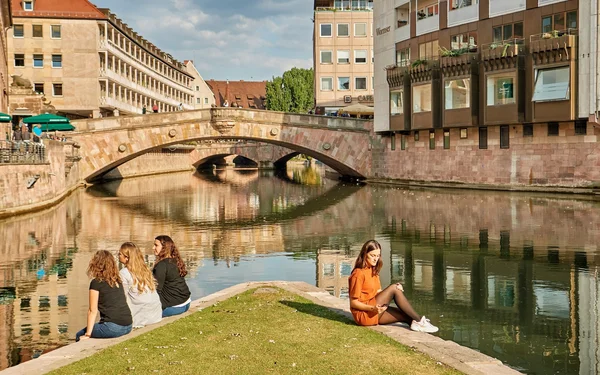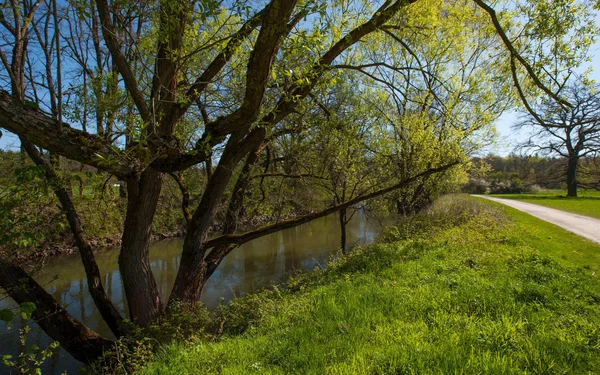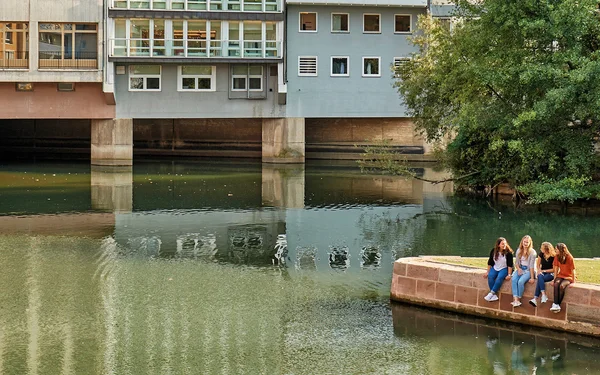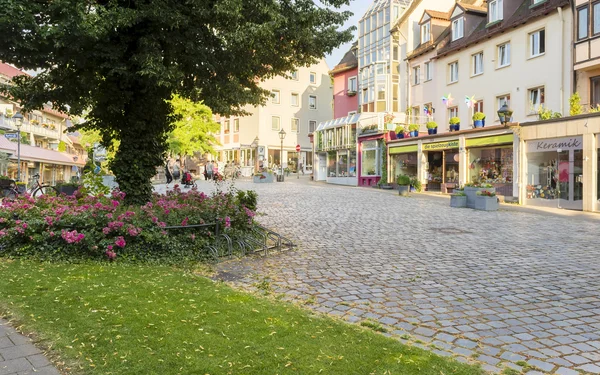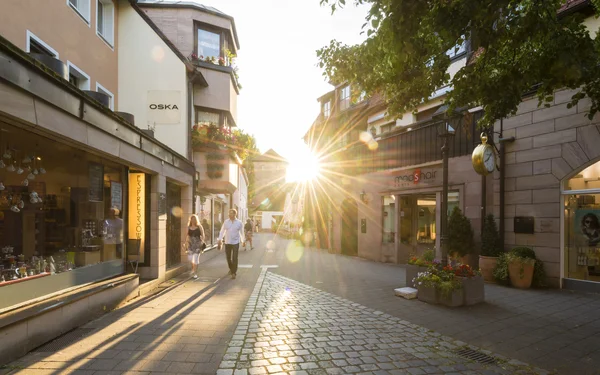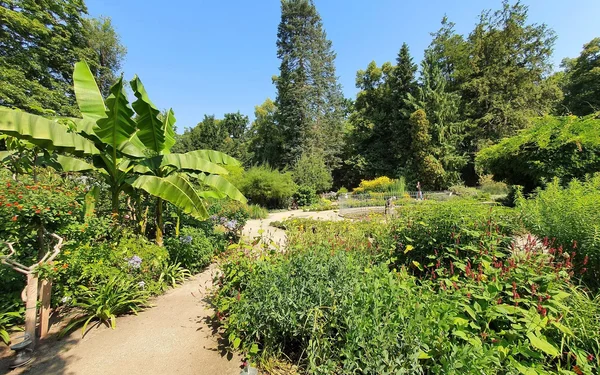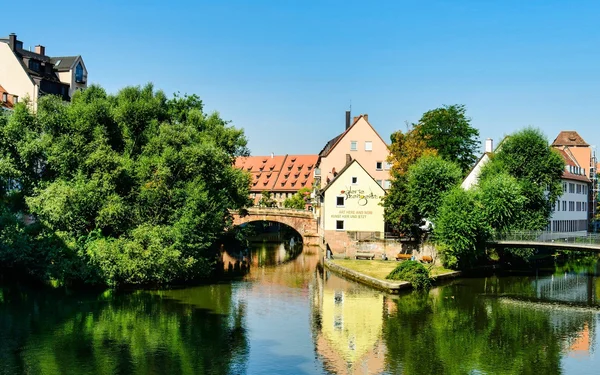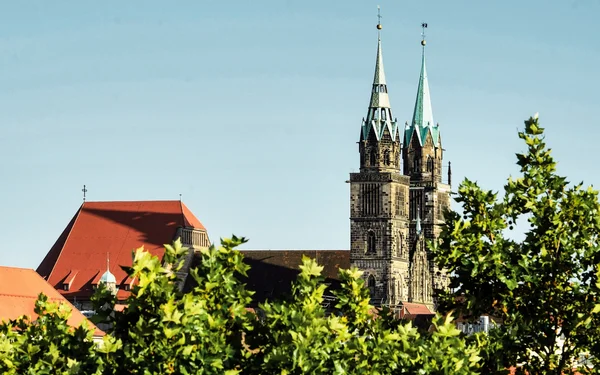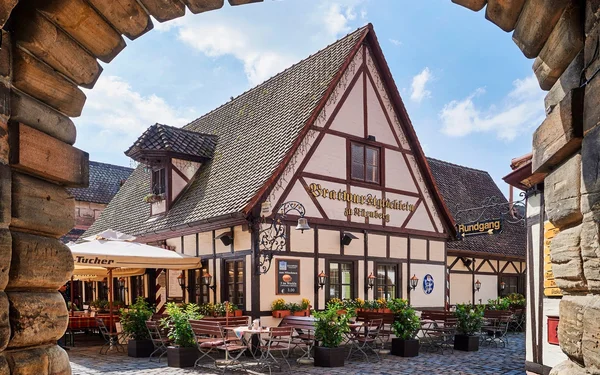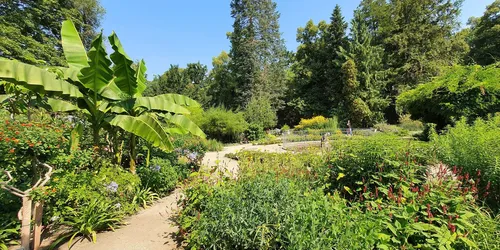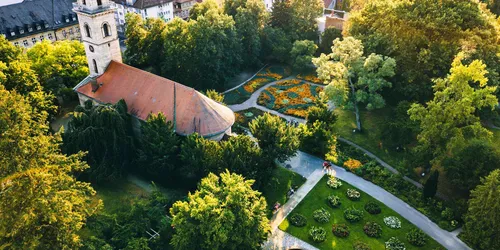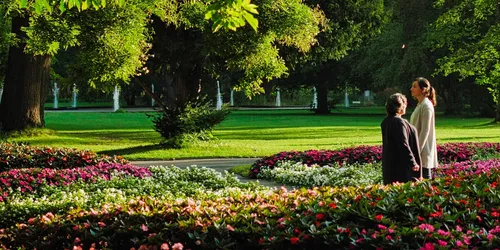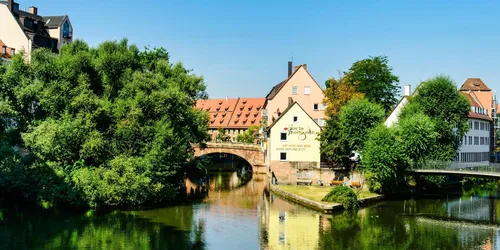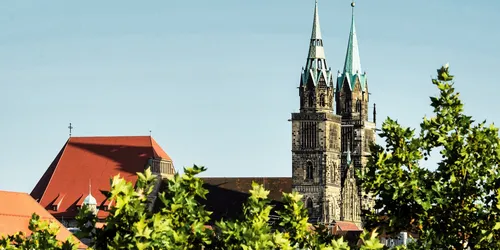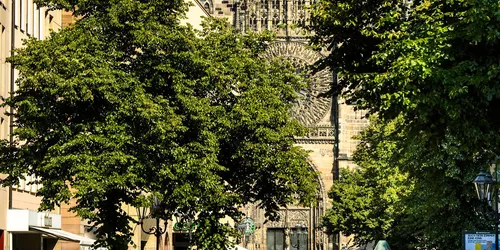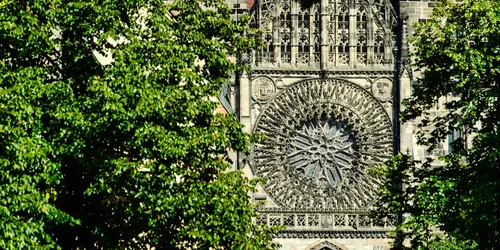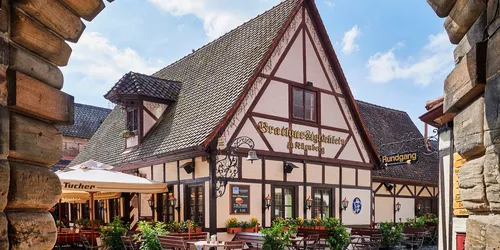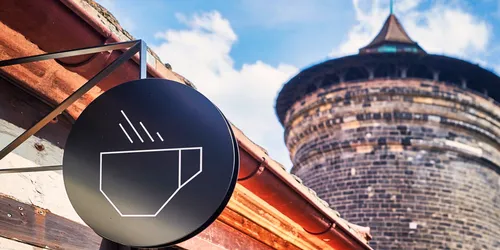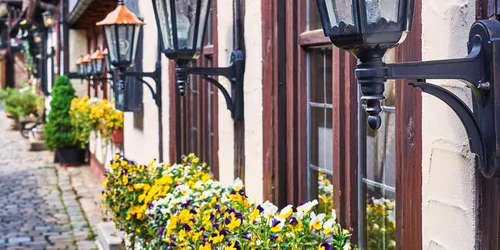From Fürth to Nuremberg along the Pegnitz
Fancy a nature trail that connects two metropolises? Then this tour is perfect for you! City hopping past idyllic parks, blooming gardens and unspoilt meadow landscapes.
Fürth
3 h
9 km
One nature trail, two metropolises: If you set off on foot from Fürth to Nuremberg, you will be amazed at how many green oases run through the two neighbouring Franconian cities. You can walk comfortably from one main railway station to the other - past idyllic parks, blooming gardens and unspoilt meadow landscapes, without setting foot in noisy urban areas. The main route follows the course of the Pegnitz, the gently rippling lifeline that connects Fürth and Nuremberg. The route starts at Fürth's main railway station, continues through the wonderfully peaceful city park and the somewhat hidden "little Mainau" - always along the banks of the Pegnitz to nearby Nuremberg. Nuremberg's historic city centre is home to the "Liebesinsel" and the Lorenzkirche church, as well as all kinds of other sights, until the tour ends at Nuremberg Central Station.
A hiking tour for culture lovers, explorers and connoisseurs
Start and end station
Start station
Fürth (Bay) Hbf
4 tour steps
9 km / 3 Stunden
End station
Nürnberg Hbf
Our tip: Please make sure to check your train connection and the expected capacity before you start your journey.
Schedule
Tour starts on Fürth (Bay) Hbf
Direction
From the main railway station, walk along Fürther Freiheit in the direction of Nürnberger Straße. For a refreshment beforehand with a cappuccino, cake or savoury snack, head to Fürther Markt or the charming Milchhäusle café. Once on Nürnberger Straße, turn left behind the Babylon cinema and you will reach the Stadtpark after a few metres.
Direction
Trödelmarkt
90403
Nürnberg
Direction
Lorenzer Platz 1
90403
Nürnberg
Direction
Königstraße 82
90402
Nürnberg
